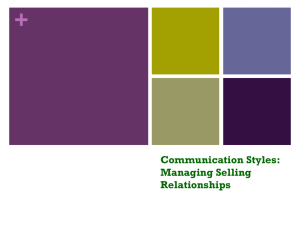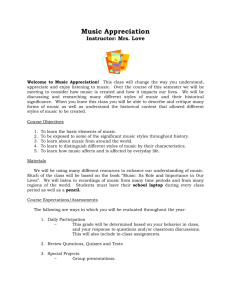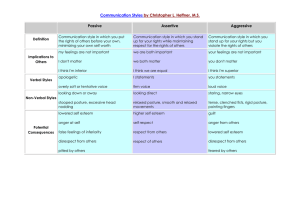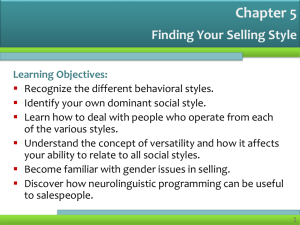Sales-Chapter 4 - rooseveltbusinessweeks
advertisement
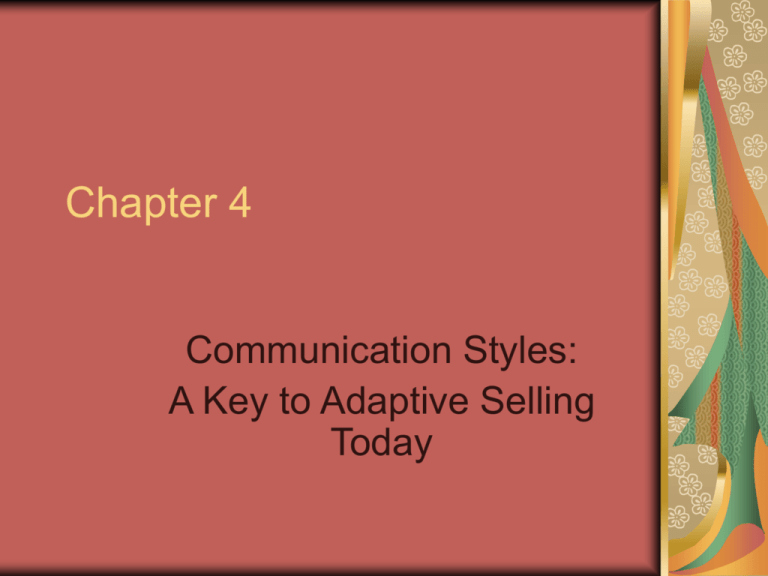
Chapter 4 Communication Styles: A Key to Adaptive Selling Today Communication Styles Patterns of behavior that others observe Sometimes called behavior styles or social styles Communication-style bias is a state of mind that can develop when we have contact with another person whose communication style is different from our own Communication-Style Principles Individual differences exist and are important A communication style is a way of thinking and behaving Individual style differences tend to be stable There is a finite number of styles To create the most productive relationships, it is necessary to get in sync with the communication style of the people you work with Dimensions of Human Behavior Dominance--the tendency to control or prevail over others Dominance indicator on p. 77 Sociability--the amount of control we exert over our emotional expressiveness Sociability indicator on p. 78 Emotive Style of Communication Appears quite active Takes the social initiative in most cases Likes to encourage informality Expresses emotion opinions Key words: sociable, spontaneous, zestful, stimulating, emotional, unstructured, excitable, personable, persuasive, dynamic Directive Style of Communication Appears to be quite busy May give the impression of not listening Displays a serious attitude Likes to maintain control Key words: aggressive, intense, demanding, pushy, serious, determined, frank, opinionated, impatient, bold Reflective Style of Communication Controls emotional expression Displays a preference for orderliness Tends to express measured opinions Seems difficult to get to know Key words: precise, deliberate, questioning, disciplined, aloof, scientific, preoccupied, serious, industrious, stuffy Supportive Style of Communication Gives the appearance of being quiet and reserved Listens attentively to other people Tends to avoid the use of power Makes decisions in a thoughtful and deliberate manner Key words: lighthearted, reserved, passive, warm, docile, patient, sensitive, relaxed, compliant, softhearted Intensity Zones Communication-Style Model Zone One—less intensity Zone Two—greater intensity Excess Zone—high degree of intensity and rigidity See excess zone chart on p. 89 Style Flexing The deliberate attempt to adapt one’s communication style to accommodate the needs of the other person See examples of how to sell to different communication styles on p. 91


